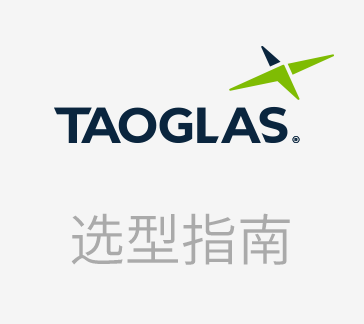What is eDRX (Extended Discontinuous Reception)?




In previous blogs we have discussed the advantages of Low Power Wide Area (LPWA) technologies like LTE-M and NB-IOT over other networking technologies — advantages that include lower power usage, lower costs, better coverage in rural and indoor locations, and higher capacity (the ability to connect to a larger number of devices in a given area).

But how do LTE-M and NB-IOT deliver these benefits? One way is with protocol innovations to the standard that enable edge devices to communicate with cellular networks in a variety of different ways. A perfect example of this is the eDRX (Extended Discontinuous Reception) feature, which enables IoT application developers to significantly extend the battery lifetime of edge devices by minimizing how much power they use.
So, what is eDRX? What differentiates it from the Power Saving Mode (PSM) feature? And in what types of IoT applications might a company want to use it?
What is eDRX?
Developed by mobile network standardization body 3GPP and introduced in 3GPP Rel.13, eDRX enables application developers to set, and later change how long an edge device stays in low-power sleep mode before it wakes up to listen for any network indications for pending data.
With eDRX, the device can listen for pending data indications without having to establish a full network connection. By just listening for a pending data indication, eDRX uses less power than if it made a full network connection, so this process helps preserve the device’s power. The time needed for this listening process is also much shorter than the time it takes to make a full network connection.
The maximum sleep time for eDRX devices ranges from up to 43 minutes for devices using LTE-M LPWA networks, to up to three hours for devices using NB-IoT LPWA networks. The minimum sleep time can be as short as 320 milliseconds (ms) for LTE-M and 10.24 seconds for NB-IoT.
In the past (i.e. with eDRX’s predecessor, DRX), the length of time that a device would sleep before waking up was dictated by the network (typically 1.28 seconds or 2.56 seconds). With eDRX the device, rather than the network, choose the length of time it will sleep, a period referred to as the eDRX cycle. Since a device is not reachable when it is sleeping, the time to reach a device depends on how long the application developer sets the eDRX cycle.
This ability to set the length of the eDRX cycle provides IoT application developers with a lot more flexibility when it comes to balancing a device’s reachability versus its battery consumption. For example, if the application chooses an eDRX cycle of 82 seconds when a cloud service sends the device a command (e.g. report your location), it could take up to 82 seconds for the device to get that command before it would report back its location. This delay is often referred to as “mobile terminated latency”.
How sensitive an application is to mobile terminated latency depends highly on the application. For example, a pet finding application could tolerate a couple of minutes to get a location fix for a pet — especially if this means the battery will last 1-year versus 1 week. With other applications, like a remote light, one might only want to wait a maximum of 5 seconds for the remote battery-powered light to respond to an “ON” request — which means the eDRX cycle needs to be set to 5 seconds.
The other good thing about eDRX is that it is not static — the application can change it anytime it wants. For example, the application can set the original eDRX cycle for an hour (extending the life of the device’s battery) and then later, when the application needs to be more responsive, reduce the eDRX cycle to a couple of minutes (using more battery power, but allowing the device to be reached with a much shorter delay).
How is eDRX different from Power Saving Mode (PSM)?
PSM is another common feature used to reduce the power used by LPWA devices. In general, PSM sleep times are much longer than eDRX. These longer sleep times allow the device to enter into a deeper, lower power sleep mode than eDRX (e.g. PSM sleep power is a few microamps whereas eDRX sleep power is 10-30 microamps). However, a PSM device takes much longer to wake up out of sleep mode and it is active for a much longer period of time because it must connect to the network before receiving any application data. For eDRX, the device needs to wake up and listen for 1 ms whereas, for PSM, the device will need to wake up and receive and transmit control messages for about 100-200 ms before it can receive a message from the cloud application – a 100X difference!
Some IoT applications do not need to be reachable at all (e.g. they only transmit data to the cloud) or they can tolerate long reachability delays (e.g. they only need to be reachable once per day). For these types of applications, PSM is a good choice, since its sleep mode uses less power and is designed to be used when a device only has to wake up infrequently.
For other applications where one needs to reach the device more often (e.g. once per hour) eDRX is a better choice. As mentioned previously, with eDRX, the device can wake up and check for a pending data indication a lot faster than a device using PSM can (1 ms vs 100 ms), while using less power while it does so. eDRX can also help lower an application’s data transmission costs, since unlike PSM, which requires the device to connect and poll the cloud to see if there is data for it, eDRX only connects to the network and communicates with the cloud application when the device receives the pending data indication from the network, indicating there is data from the cloud application for it.
Though data transmission costs can be a factor, the most pertinent question of which power-saving feature to use usually comes down to the use case’s reachability needs. Although it depends on many factors, in most cases the tipping point for when to use eDRX vs PSM is if the application needs to be reachable in a time period of approximately six hours or less.
What use cases is the eDRX feature best suited for?
eDRX is well suited for IoT application use cases where you want to preserve a low-cost edge device’s battery power, and the device’s reachability does not have to be instantaneous, between 5 seconds to six hours.
One example of such a use case is a smart gas meter monitoring IoT application. With many smart gas meter applications, government regulations mandate that the company responsible for the meter be able to quickly shut off the gas supply in a building, for example, after being informed that there is a fire nearby. While the company does not need to shut off the gas immediately, it does need to do so within a mandated time period, for example, two minutes from receiving the indication from the fire department of the fire spreading to the location where the smart gas meter is located.
With eDRX, the company can set up the smart gas meter to request an eDRX cycle of 82 seconds. This eDRX cycle ensures the meter can respond to a shut-off request within the required 2 minutes. In this way, the life of the device’s battery can be extended, the cost of the device can be reduced (since it needs a smaller battery), and the data transmission costs for the application are minimized (since the device only connects and transmits data when it is told to by the network). All while complying with the government regulation and helping ensure the building’s occupants are safe if there is a fire nearby.
Another example of a popular IoT use case that eDRX is well suited for is what I would call “finding” IoT applications – for things like pets, bikes, laptops, expensive tools, and similar assets. Unlike asset tracking applications, where frequent, close-to real-time updates are required, for these applications, the user will usually only want to know where the asset is when the asset has been misplaced or lost. Of course, when they do want to find the asset, they will often want this information quickly — within 1 or 2 minutes is usually acceptable if this provides the device with an extra year of battery life. In a couple of minutes Fido can’t get into too much trouble – but give him an hour on his own, and he can get into a lot of trouble with the neighbor’s cat.
With eDRX, users can learn the current location of their pet, bike, laptop, tool, or another asset in a minute or two, using a small, low-cost, low-power device attached to the asset. In addition, since the device would only connect to the network when it was told to, data transmission costs for the application would be nearly zero.
As the two examples above illustrate, eDRX expands the IoT market by offering application developers the opportunity to deploy new kinds of IoT applications for use cases where they do not need to reach their edge device immediately, but also can’t wait six or more hours to do so. For these types of use cases, the Sierra Wireless HL7800 LPWA module provides best-in-class eDRX performance.
With an eDRX cycle of 82 seconds, the average current used by the HL7800 can be as low as 50 microamps (depending on mobility, temperature, coverage, network configuration, and of course application data transmissions). Assuming minimal application data transmissions, this means one alkaline AA battery could power the device for more than 2 years! Or if a rechargeable battery is preferred, a 2x1x1cm lithium Ion battery (small enough to fit around Fido’s neck) could power the device for more than 3 months!
Sierra Wireless – Your Source for IoT Solutions for eDRX Use Cases
In addition to the HL7800 LPWA Module, Sierra Wireless offers a variety of other embedded IoT modules for various eDRX use cases. All of these modules are available as Ready-to-Connect solutions, with an embedded SIM pre-connected to global mobile networks that simplifies edge device installation and deployment. For companies interested in an all-in-one edge-to-cloud solution for connecting to their industrial assets, Sierra Wireless also offers Octave, which integrates edge devices, networks, and cloud APIs into a single solution.
Start with Sierra to learn more about how you can use eDRX, PSM, and other innovative LPWA features for IoT applications that allow you to unlock value in today’s connected economy.
- |
- +1 赞 0
- 收藏
- 评论 0
本文由深蓝的鱼转载自Sierra Wireless Blogs,原文标题为:What is eDRX (Extended Discontinuous Reception)?,本站所有转载文章系出于传递更多信息之目的,且明确注明来源,不希望被转载的媒体或个人可与我们联系,我们将立即进行删除处理。
相关推荐
Leading the Future of Low-Power IoT: A Conversation with Semtech and Sony Altair on the New HL7900 Module
As the world continues to embrace the Internet of Things (IoT), the demand for low-power, high-efficiency solutions grows exponentially. At the forefront of this technological evolution stand two industry experts: Sony Altair and Semtech. Their latest innovation, the Semtech HL7900 module—a global 5G LPWA module featuring the Sony ALT1350 chipset—promises to revolutionize the IoT landscape by providing ultra-low power, future-ready connectivity.
技术探讨 发布时间 : 2024-08-27
Securing Semtech’s (Formerly Sierra Wireless)Managed Connectivity Services and Mobile Virtual Network with Defense in Depth
Semtech is committed to delivering secure Managed Connectivity Services to our customers through the responsible operation of our MVNO infrastructure. Recognizing the numerous threats faced by MVNOs, Semtech employs a defense-in-depth security strategy built on industry-leading tools and recognized practices supported and verified by third-party assessments and audits. Together with security training and robust asset management, Semtech delivers efficient, reliable operation for our customers built on a secure foundation.
技术探讨 发布时间 : 2024-04-20
Sierra Wireless(司亚乐)通信模组/Wi-Fi & 蓝牙模组/GNSS模组选型表
描述- Sierra Wireless simplifies the IoT, delivering you the Connectivity, Modules, and Router Solutions you need to accelerate your data-driven transformation. For almost 30 years Sierra Wireless has led the cellular technology space, bringing a robust set of IoT Solutions to customers across the globe.
型号- WP7608-1 GPS Q-M2M,1104197,1103383,HL7800 M1/NB1,EM7565 M2M,1104196,1104195,HL7845,1104194,1103783,1105043,1104198,1104231,EM7590,EM系列,XM1210,1104193,WP7702 GPS Q-M2M,WP7609 GPS Q-M2M,1104192,BC127-EXT-APTX,1103706,WP7607 R2C Q-M2M,1104918,1103708,WP7607-1 R2C GPS Q-M2M,1104912,RC7620 Q-M2M,RC7611 DO Q-M2M,1104186,WP7609 Q-M2M,1105036,WP7608 GPS Q-M2M,1105030,1103892,1103891,WP7610 GPS Q-M2M,WP系列,1104904,EM7511,1104628,1104903,WP7702 R2C GPS OCTAVE,BC127-APTX,EM7590 Q-M2M,1104743,1104742,EM7565 Q-M2M,1104902,1105039,1104866,WP7607 R2C GPS Q-M2M,1105023,1105024,1105025,EM7431 Q-M2M,1105026,1105020,EM9191 5G SUB6 FULL,1105021,RC7611,HL7802 M1/NB1/2G R2C,1105022,RC7611-1 DO Q-M2M,RC7630 R2C Q-M2M,RC系列,WP7610 Q-M2M,1105027,1104681,RC7620 GNSS Q-M2M,1104680,1104201,1104200,1104287,XS1110,EM7511 M2M CBRS,WP7611 R2C GPS Q-M2M,1103917,1104324,HL7800 R2C,1104686,1104323,XA1110,1104846,1104208,1104207,1104328,HL7800,RC7630-1 R2C GNSS Q-M2M,1104274,1104795,WP7608 Q-M2M,1104277,WP7611-1 R2C Q-M2M,1104671,BC127 V3,EM9291,HL7800-M,BC127,WP7605 GPS Q-M2M,RC7630 R2C GNSS Q-M2M,WP7611 R2C Q-M2M,1104557,1104314,1104796,EM7511 Q-M2M,1104715,1104956,1103746,1104559,1104558,1104263,MC系列,1104262,1104020,WP7611 DO R2C GPS Q-M2M,1103574,EM9191 5G SUB6,1104662,RC7611-1 DO GNSS Q-M2M,1104264,RC7611-1 DO R2C Q-M2M,RC7620-1 R2C GNSS Q-M2M,BC127-CVC,1104828,WP7607-1 R2C Q-M2M,WP7608-1 Q-M2M,1104826,BX3105,1104268,1104308,1104307,1104306,1104668,1105067,1105068,1104893,1104892,RC7620-1 Q-M2M,1105060,1105061,EM7690,1105062,1104818,1104938,1104937,RC7620-1 GNSS Q-M2M,1104898,EM7411 Q-M2M,EM7421 Q-M2M,1104895,1104813,1104812,HL7810,RC7611 DO GNSS Q-M2M,HL7812,1104486,RC7630-1 R2C Q-M2M,WP7702 R2C GPS OCTAVE Q,EM9190 5G SUB6,1104886,EM9190 5G SUB6 + MMWAVE,1104885,1104125,1104924,1104528,1104889,1104405,1104888,1104129
Sierra Wireless® HL Series Embedded Modules Compact, Flexible, and Future Proof 2G, 3G, 4G, and LPWA Essential Modules Datasheet
型号- HL8549,HL8528,HL7648,HL7538,HL7549,HL7548,HL8548,HL7688,HL7588,HL7518,HL6528,HL7749,HL7528,HL7539,HL7748,HL8518,HL8529,HL7718,HL7618,HL SERIES,HL7692,HL7650,HL7690
HIVE-ZOX Selects Sierra Wireless LPWA Module for Global Cold Chain Monitoring Solution
Sierra Wireless HL78 Series module integrated into HIVE-ZOX tracking solution, providing seamless global connectivity and real-time visibility of COVID vaccine shipments.
应用方案 发布时间 : 2022-09-03
Sierra Wireless Announces New 5G LPWA Module HL7900 Integrating Sony’s Altair ALT1350 Chipset
Sierra Wireless HL7900 with its ALT1350 chipset not only offers best-in-class battery life and enhanced security, but sub-GHz and 2.4GHz integrated radios enable low-power IoT protocols, offering customers the flexibility of multiple connectivity options with enhanced coverage, and reduced costs.
新产品 发布时间 : 2023-03-14
Breaking New Ground in IoT Connectivity: Sierra Wireless HL781x LPWA Module is Successful NTN over NB-IoT Connectivity
In an exciting development for the Internet of Things (IoT) sector, Semtech Corporation and Rohde & Schwarz successfully demonstrated the integration of Non-Terrestrial Network (NTN) connectivity using the Semtech HL781x Global Low Power Wide Area (LPWA) Module. This achievement marks a significant milestone in transforming Satellite IoT from a buzz concept into a reality ready to revolutionize IoT applications.
产品 发布时间 : 2024-08-20
Sierra Wireless LPWA模块 选型表
Sierra Wireless LPWA模块选型:Dimensions(mm):15mmx18mmx2.4mm和22mmx23mmx2.5mm;Bands:多种Bands;峰值下载率(Mbps/Gbps/Kbps):Cat-M 300Kbps,Cat-NB1 27Kbps,Cat-M1:300kbps,Cat-NB1:27kbps,Cat-M:590kbps,Cat-NB2:127kbps,Cat-M1 590Kbps,Cat-NB2 127Kbps;峰值上传速率(Mbps/Gbps/Kbps):Cat-M 375Kbps,Cat-NB1 65Kbps,Cat-M1:375kbps,Cat-NB1:65kbps,Cat-M:1100kbps,Cat-NB2:158kbps,Cat-M1 1100Kbps,Cat-NB2 158Kbps
|
产品型号
|
品类
|
Dimensions(mm)
|
Bands
|
Peak Download Rate(Mbps/Gbps/Kbps)
|
Peak Upload Rate(Mbps/Gbps/Kbps)
|
|
HL7800 M1/NB1_1104937
|
LPWA IoT Modules
|
15mmx18mmx2.4mm
|
LTE:B1,B2,B3,B4,B5,B8,B9,B10,B12,B13,B17,B18,B19,B20,B25,B26,B27,B28,B66
|
Cat-M 300Kbps,Cat-NB1 27Kbps
|
Cat-M 375Kbps,Cat-NB1 65Kbps
|
选型表 - Sierra Wireless 立即选型
Sierra Wireless(司亚乐)HL78系列LPWA模组选型指南
目录- LPWA Modules Introduction LPWA Modules Comparing NB-IoT and LTE-M & Octave Introduction
型号- HL7800,HL7810,HL7802,HL7845,HL7812,HL78,HL780X,HL781X
Taoglas(陶格斯)天线/滤波器/电缆/连接器选型指南
目录- Products &Services Catalog Company Profile and Products Application Cellular antennas GNSS antennas Combination antennas LPWA/ISM antennas UHF antennas Wi-Fi/ZigBee/Public Safety antennas Ultra-wideband antennas DSRC antennas UAV antennas SATCOM antennas NFC antennas FirstNet antennas Ceramic Filters Cable Assemblies Connectors Services
型号- PC81,FXR.08.A,CAB.922,LWB02,LWB01,GSA.10,CGGP.25.4,MAT.03A,TG45,DCP.5900.12,PCUWB.01,MA460.K,OMB.868,GPDF.47,FXR.07.52.0075X.A,PA.711.A,GSA.20,GGBTP.35.3,SDDCP.5900,TG.22.0111,FW.80.SMA.M,PCS.06.A,TG.22.0112,OMB.433.B03F21,FXR.06.A.DG,TLS.20.1F21,GW.05.0E23,CAB.916,CAB.917,TG35,WMA.328,CGGP.18.4.C,FXP290,IS.01.B,MA700.B,WLP.25,MA120,MA241,GGBTP.35,MA240,MB.TG30,TG.22.0221,GLA.01,WCM.02,TG.22.0222,SGGP.18A,GSA.8827R,TLS.01,CSA.10,UWC.40,FXP280,MA131,MA252,FXP14R,MA130,MA251,CAB.J05,MA250,FXP14,SDWA.01,TCP.02,G20.WMC,WCM.10,PCS.07.A,PC91,DSGP.1575.18.4,GW.59,SDCP.5900,DSGP.1575.18.2,FMA253,CSA.21,WPC.25B,FW.24,WPC.25A,CSA.20,TI.19,TI.18,FXR.07,SWLPD.12,SXP.25.4,FXR.06,FXR.06.A,FXP29,FXR.08,AP.35A,GW.71,SGGP.12A,OMB.450.B06F21,OMB.8912,HAD.B.10,FMA103,CSA.32,CSA.33,CSA.34,MA710.B,UWC.20,CSA.30,CSA.31,TG.30.8112,TG.30.8113,OMB.915.B12F21,CSA.36,CSA.37,A.01.C,FW.24.SMA.M,SGGP.25A,AP.10H,AP.10G,FXR.05.52.0075X.A.DG,WDP.25,FR4 PCB,FXP40,PCB.MMCXFSTJ.HT,GSA.8859,FW.45,TG.30.8111,UWB.41,G20,G24,MA1060.A,FXR.07.A,PA.25A,TG.45.8113,SGGP.18.4.A.08,TG.08.0723,RG-178,ISPC.868.A,FW.95.B.SMA.M,UWB.31,GLAD.01,UWC.01,PA.710.A,CSA.50,AP.25E.07.0054A,RG-174,CSA.51,WLP.4958,UWB.30,TI.08,RECE.20449.001E.01,G30,G35,DCP.5900.25,CGIP.25.4,NMODM.34.N.YN,MA170,FXP07B,DSGP.25,ISM.20.5,FMA459,ISM.20.4,ISM.20.3,CGGP.35.3,ISM.20.2,HAD.A.10,DCP.5900,FXUWB01.01,UWB.20,LLP.2500.X.B.30,TI.10,IS.04.B,CGGP.35.2,FXUWB01.07,TI.16,OMB.433.B06F21,FNS.01.30WW111,BPF.58.01,WA.500W,FXP70,AGGBP.25A,FXP74,GSA.8827,WS.01.B,LMA101,UWB.10,LMA100,FXP72,CAB.D05,GSA.8821,TLS.30.105111,GSA.8822,FXP75,IMA.01,OMB.242.08F21,AP.10H.01,AGGBP.25B,A.03.C,OMB.450,PA.26A,DTAD.01,PCB.SMAFSTJ.B.HT,GPSF.36.7.A.30,GW.26.0112.HT,GRS.01,STS.01,GPSDSF.35.7,FW.80,BPF.24.01,FW.86,AP.10G.01,FW.24.NTY.M,IS.05.B,PC104R,AQHA.50,LBP.2450.X.C.30,CAB.622,CAB.V11,CAB.V12,CAB.V13,AA.162,GSA.8841,FW.92,CGGP.35.2.A.08,FW.90,LA.02,CAB.628,WS.02.B,MA210.K,FW.95,GSA.8845,TG.22.0112.HT,GGBSFTP.45,PC SERIES,OMB.868.B05F21,IS.05,IS.04,PCS.26.A,AJA.02,ISPC.915.A,WCM.02.0121,AA.170,AA.171,DBP.1575.W.A.30,TG.08.0113,IS.01,GSA.8830,CAB.V08,MA1270.A.LBICGTY.001,CAB.V09,TI.10.0112,CAB.V05,BGSA.20.2,TI.10.0111,FXR.07.A.DG,PCB.SMAFST.2H.A.HT,FXUB64.18.0150C,WDP.2458,PAD.71X.A,AP.25F.07.0078A,CAB.721,SWLP.12,AJA.10,GRS.01.A,CAB.W11,FXUB70,CAB.0130,CAB.W12,FXUB71,SWLP.10,CAB.W13,CAB.720,PCB.SMAFSTJ.A.HT,FXUB68,WCM.01.0111W,CSA.31L,CA.69,PCB.SMAFST.2H.B.HT,SWDP.2458,FXP810,CAB.953,CAB.954,CAB.955,FXUB65,FXUB66,FXUB63,LPF.12.01,PCS.06,PCS.07,FXUB64,CAB.951,CAB.718,CAB.719,CAB.W08,CAB.W09,CAB.956,CAB.W05,AA.109,CC.001,AA.105,EMPCB.SMAFSTJ.C.HT,NFR SERIES,CSA.32L,AA.107,AA.108,SXP.22.4,WM.90,CSA.33L,AQHA.11,CGGBP.35,CAB.942,CAD.A.69,FMA959,CAB.940,GW.26.0111.HT,DXP.02.A,MA1509,CM.02,RECE.20369.001E.01,WTSP.2400,EMPCB.SMAFSTJ.B.HT,OMB.450.B03F21,GGSFTP.50.7.A.08,CA.51,CA.50,CAB.X06,NCS.5820,CAB.X07,TLS.30.1F21,CAB.X04,TLS.01.305111,CAB.X05,GP.1575.18.4,GWSFTP.50.3,WM.80,GP.1575.18.2,PCB.SMAFRA.HT,LBP.2450.X.A.30,TLS.01.1F21,FMA939,AP.35A.07.0054A,GP.1575.35,MFX3,DXP.01.A,GWSFTP.50.3.A.08,TG.35.8113,TLS.30.1F11,MA750.B,MA930,SP.1615.25,AA SERIES,SGGP.25.2.A.02,FXUWB10.01,FXP611,TLS.01.1F11,FXP612,GW.11.A113,GA.111,GA.110,FXUWB10.07,AGGP.25F,CGGBP.18.4,ISA.40,MA705,WPC.25B.35,GA.107,LLP.5875.Y.A.30,MA700,FXR.01.A,ALA.01,ASGP.1575.25B.4.A.0,SDDCP.5900.25.10.A.08,FXP840,OMB.868.B08F21,CAB.0114,HA.10.A,AP.10E.07.0039B,GLWA,FXR.08.52.0075X.A,CSA.31L.1,CSA.31L.2,CSA.31L.3,DBP.868.U.A.30,WLAD.01,EMPCB.MMCXFSTJ.A.HT,DSGP.1575.25,CAB.618.C,GSA.20.1,MA912,CAB.A02,GSA.20.5,GSA.20.4,MA910,GSA.20.3,CAB.01402,FXR.06.52.0075X.A,ISMP.868,WCM.10.005QQ111,FXP830,FXP831,HA.21.A,CAB.695,CAB.R01,CAB.0101,CAB.R02,OMB.915.B08F21,WSA.2458,MCS6,CSA.30L,LBP.5410.Z.A.30,FXP543,FNS.01.1F11,FW.91.TNC.M,GL SERIES,AA.180,MAT.500.B,MAT.500.A,PCB.MMCXFSTJ.SMD.HT,AP.17E.07.0064A,WSA.2400,ISMP.868.35.6,AP.12F.07.0045A,WS.02,MA750,ILA.08,ILA.09,FXP534,ILA.02,CAB.S01,ILA.01,CAB.S02,GWSFTP.50,GPDF.47.8.A.02,FW.43.B.SMA.M,GWLA.01,MA501,MA741,GP.1575.15.4,GW.20.A151,FXR.08.A.DG,GP.1575.25.2,FXP523,FXP524,HA.31.A,ISM.10,DSGP.1575.12.4,WMA.328.A.001,ISA.51,ISA.50,GWLA.10,GW.11.A153,MCS6.A,NSA.20.1,MA710,TLS.20.105111,MA950,FXR.08.52.0075X.A.DG,CBD.01,CBD.02,GP.1575.25.4,FW.81.SMA.M,NSA.20.2,TD.10,MA850,LBP.2450.X.B.30,G21.B,DBP.433.T.A.30,WCM.01W,TGC-200,AGGP.35F,ISM.20,CAB.T01,CSA.30L.1,CSA.30L.2,CGGP.25,CSA.30L.3,NCP.5820,FXR.07.52.0075X.A.DG,HLA.01,MA600,RECE.20279.001E.0,MA760.B,MA961,WSA.5800,MA605,MA603,MA602,MA1130,CGGBP.25.2,CGGBP.25.4,TI.08.A,TI.08.C,WLP.4958.12.4,HLAD.01,FW.45.B.SMA.M,MGA1,TS.07,CSA.70,CSA.71,CGIP.25,A.41.A,MA413,GP.1575,MA412,MA411,TG.45,PC140,MA75X,ISMP.915.35.6,HA.10,MA673,MA310,MA672,MA671,DBP.2450.X.A.30,DSGP.1575.15.4,PA.710,A.30,FW.86.B.SMA.M,PA.711,MA303,MA301,SM.20.1,RG.02.02,CSA.51.5,RG.02.01,ISMP.915,CSA.51.6,TG.19,MA520,FXR.05.A,MA761,MA760,OMB.868.B10F21,AP.25F,TG.10R,DCP.5900.12.4.A.02,A.41,A.40,A.40.A,LLP.2500.X.A.30,AGGBP,MA510,TG.22,MA752,PC27,MA515,FW.90.SMA.M,GP.1575.35.3,ILAD.02,GP.1575.12.4,ILAD.01,MA41
电子商城
现货市场




































































































































































































登录 | 立即注册
提交评论